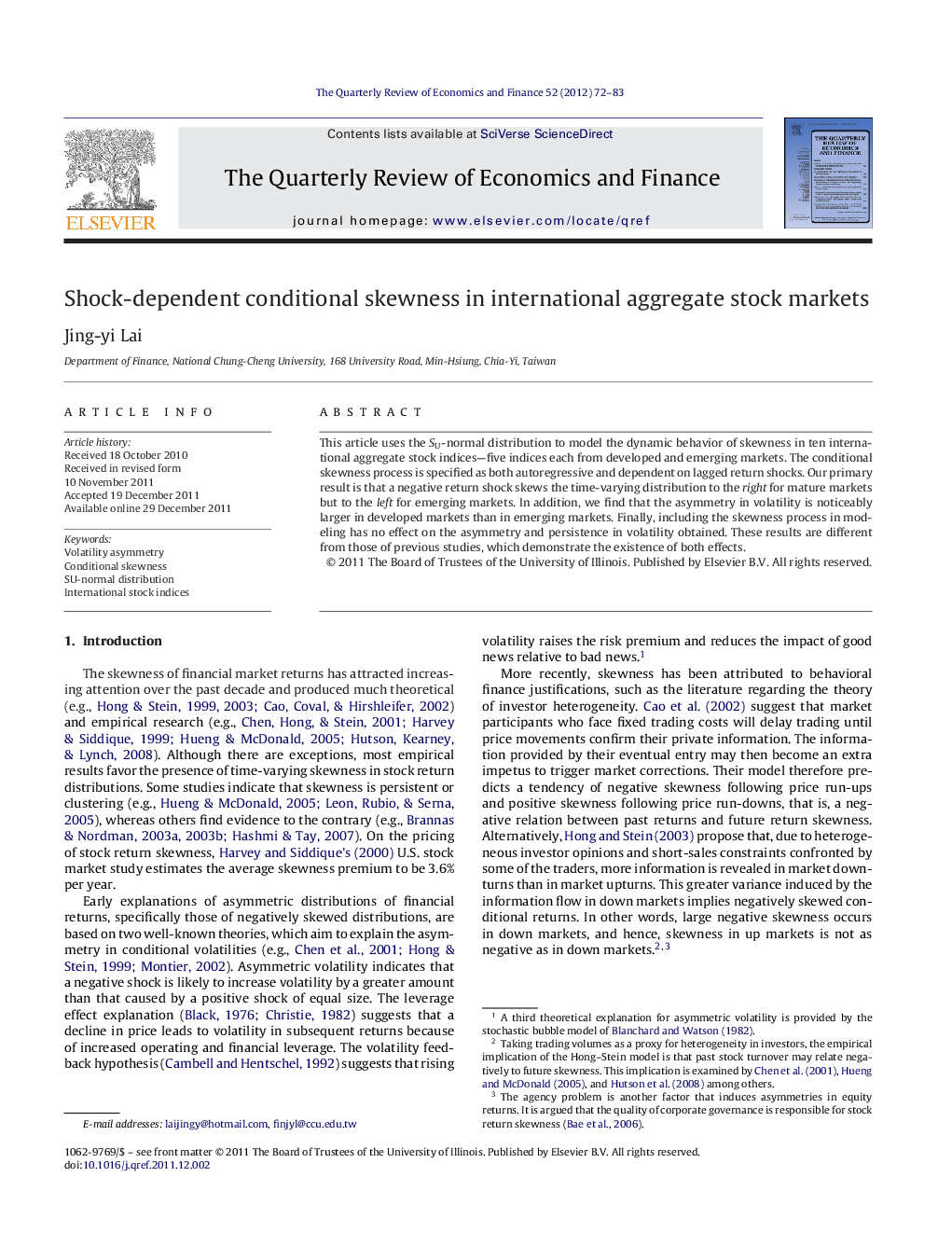| Article ID | Journal | Published Year | Pages | File Type |
|---|---|---|---|---|
| 982243 | The Quarterly Review of Economics and Finance | 2012 | 12 Pages |
This article uses the SU-normal distribution to model the dynamic behavior of skewness in ten international aggregate stock indices—five indices each from developed and emerging markets. The conditional skewness process is specified as both autoregressive and dependent on lagged return shocks. Our primary result is that a negative return shock skews the time-varying distribution to the right for mature markets but to the left for emerging markets. In addition, we find that the asymmetry in volatility is noticeably larger in developed markets than in emerging markets. Finally, including the skewness process in modeling has no effect on the asymmetry and persistence in volatility obtained. These results are different from those of previous studies, which demonstrate the existence of both effects.
► Modeling the dynamic behavior of skewness in ten international stock indices. ► A negative return shock skews the distribution to the right for mature markets. ► Volatility asymmetry is noticeably larger in developed markets. ► Including the skewness has no effect on the volatility asymmetry and persistence.
